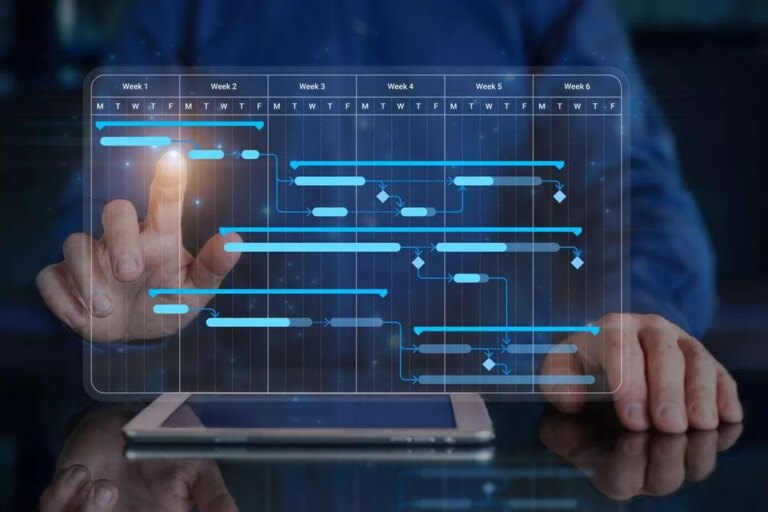This means, among other things, that data and components from the old system must be moved to the new system. Regardless if the team works with a document of functional requirements or a handwritten list, everyone must be able to understand each proposal, and each comment, to be involved. Additionally, this framework ensures that the system is developed within the given time constraints and budget. Thanks to SDLC, the new system is implemented flawlessly in the current and future IT-infrastructure of a given company. An effective SDLC ensures that the to-be-developed system is high quality and meets the client’s expectations. Development and operations are merging into a DevOps capability, as the boundaries between disparate teams has been slowly dissolving in favor of a streamlined and synchronized approach to development.
SDLC consists of six steps which I have diagrammed here for your reference. Knowing your specific needs, understanding the peculiarities of each technique, and choosing to select the most compatible one will help your project succeed. Getting a new system deployed is exciting, but don’t rush into deployment without thoroughly testing the system.
1.1 Differences Between Iterative and Planned
This model is ideal for smaller projects where requirements are very well understood. The Waterfall technique is a basic, linear methodology in which you must complete each project step before moving on to the next. It provides good project control, ideal for highly regulated workplaces or projects with precisely specified criteria. Approximately 51% of organisations still employ the Waterfall strategy. Exploring the many methods used in the Software Development Life Cycle (SDLC) can be tough.

There are several system SDLC models that work well for developing applications in Oracle APEX. Each technique is tailored to specific types of tasks and has its own set of benefits and drawbacks. For a successful software development lifecycle, it is critical to select one that corresponds with your project’s particular requirements, team competencies, and stakeholder involvement. During the development phase, the project moves into the production environment, where the specifications detailed in the design document are brought to life in code. If the prior steps of the process have been well-documented, the development phase should be straightforward. Comprehensive documentation provides a roadmap for development teams to build, test, and maintain software applications.
What are SDLC models?
In order to guarantee the success of this modern software development model, an organization must be strategic in selecting tools that support and enhance this effort. As a proven leader in the application security field, Synopsys offers a comprehensive suite of products and services perfectly tailored to this effort. Synopsys enables you to add security testing to an existing development process, thereby streamlining security throughout the SDLC.
- Getting a new system deployed is exciting, but don’t rush into deployment without thoroughly testing the system.
- Prior to the 1950s, computing was not elaborate enough to necessitate a detailed approach like the SDLC.
- While this is the functional requirement for SDLC approaches, it is also critical to consider the opinions of diverse stakeholders.
- Around seven or eight steps appear commonly; however, there can be anywhere from five upwards to 12.
- Application performance monitoring (APM) tools can be used in a development, QA, and production environment.
- Before writing content the author must first define the requirements, plan what will be written, and then actually put pen to paper.
Software testing must take place in a specialized testing environment and should test the full functionality of the system (the test environment). Results of software testing must be documented and approved by the IT Manager and the System Owner. All errors shall be tested after correction to ensure that they have been eliminated as part of the regression testing process and that no new ones have been introduced.
Extra: Software Maintenance
Various SDLC methodologies have been developed to guide the processes involved, including the original SDLC method, the Waterfall model. Other SDLC models include rapid application development (RAD), joint application development (JAD), the fountain model, the spiral model, build and fix, and synchronize-and-stabilize. This post will explain the broad steps of the systems development life cycle and a few of the most popular SDLC models development teams use to create a new system. DevSecOps, an extension of DevOps, is a methodology that emphasizes the integration of security assessments throughout the entire SDLC.

The less time spent developing the right solution, the sooner your business can deploy it. Before your developers can move onto the development stage of the process, you must first address system design. The design phase transforms the information in the SRS document into a logical structure. The longer your business pursues an infeasible project, the more money and resources will be wasted. If, at the end of the planning phase, your organization realizes the feasibility is dubious, don’t be afraid to walk away and rethink your system development project.
Common Challenges in Implementing SDLC Methodologies
This might require documenting the risk information needed to address the trust requirements in contracts, service level agreements (SLAs), or other forms of legal agreements. The software development lifecycle addresses only the development and testing of software components. On the other hand, system development is a broader superset involving the setup and management of the software, hardware, people, and processes that can make up a system. It can include tasks like organizational training and change management policies that don’t fall under the software development umbrella.

Share your plan with your team and key stakeholders to provide visibility, and assign tasks to individuals to ensure nothing slips through the cracks. Regardless of the process implemented and the tools used, all require the crucial element of documentation to support findings, close iterative phases, and to analyze success. Today’s increasing demand for data and information security also factor into the overall planning, training, testing, and deployment of a system. In order to understand the concept of system development life cycle, we must first define a system. A system is any information technology component – hardware, software, or a combination of the two.
New to software development?
As such, the move is done during off-peak hours, to ensure a minimal impact on business operations. Both professionals and end-users should be c# web development able to reap the benefits of the new system during this phase. During the fifth phase the system is installed in the production environment.
The Forensic Laboratory configuration management process is defined in Chapter 7, Section 7.4.5. These standards should be used within the context of the Forensic Laboratory’s Secure System Development Life Cycle. They are designed as a checklist to ensure that proper attention is given to all aspects relevant to the secure implementation of developed software. The execution component is responsible for the final deliverable of the project and is built around pure code development, system configuration, or a combination of both. Once the themes have been identified then there are predetermined tasks and techniques to finish the project as defined by the approved methodology of the organization. The second theme includes ways to determine the data necessary to produce the logical requirements specified by the organization.
Project Managing the System Development Life Cycle
Those involved in the SDLC include the c-suite executives, but it is the project/program managers, software and systems engineers, users, and the development team who handle the multi-layered process. Each project has its own level of complexity in planning and execution, and often within an organization, project managers employ numerous SDLC methods. Even when an enterprise utilizes the same methods, different project tools and techniques can differ dramatically. Regardless of the specific model, utilizing the software development life cycle sets projects up for success.
By following clear steps and documenting everything thoroughly, your organization can drastically reduce the complexity and stress of system development. To complete a new system development project, you need a conceptual model that ensures all policies and goals are met. To access specialized expertise or reduce costs, organizations sometimes outsource or offshore parts of the SDLC. However, outsourcing software development introduces risks around quality, security, and intellectual property.
Expert Systems Construction
The systems development life cycle (SDLC, also called the software development life cycle or simply the system life cycle) is a system development model. SDLC is used across the IT industry, but SDLC focuses on security when used in context of the exam. Think of “our” SDLC as the secure systems development life cycle; the security is implied. In fact, each organization may develop its own list of tasks, techniques, and (automated) tools, which can be referred to as “their” methodology. The basic fact finding techniques include questionnaires, interviews, observation, and document collection.